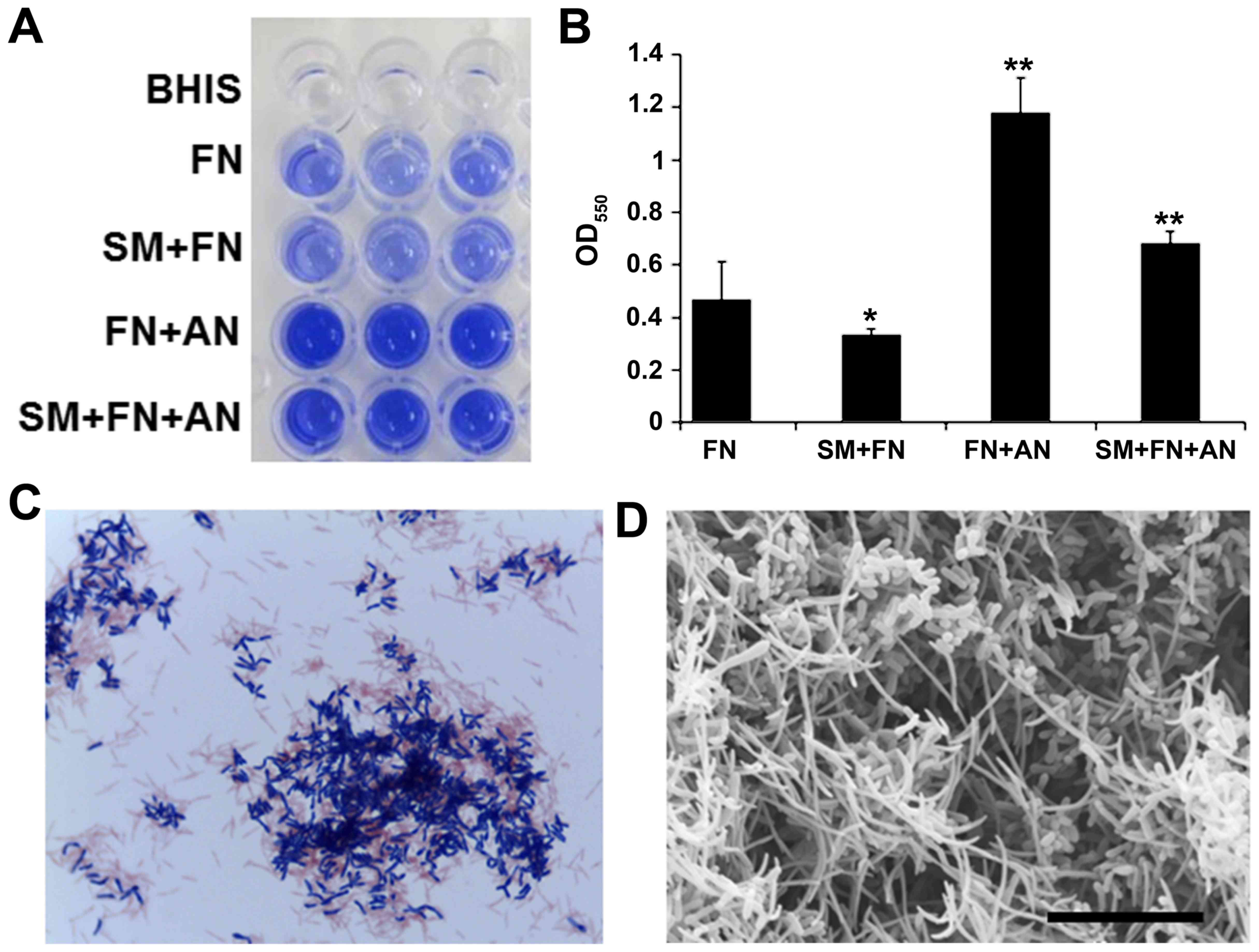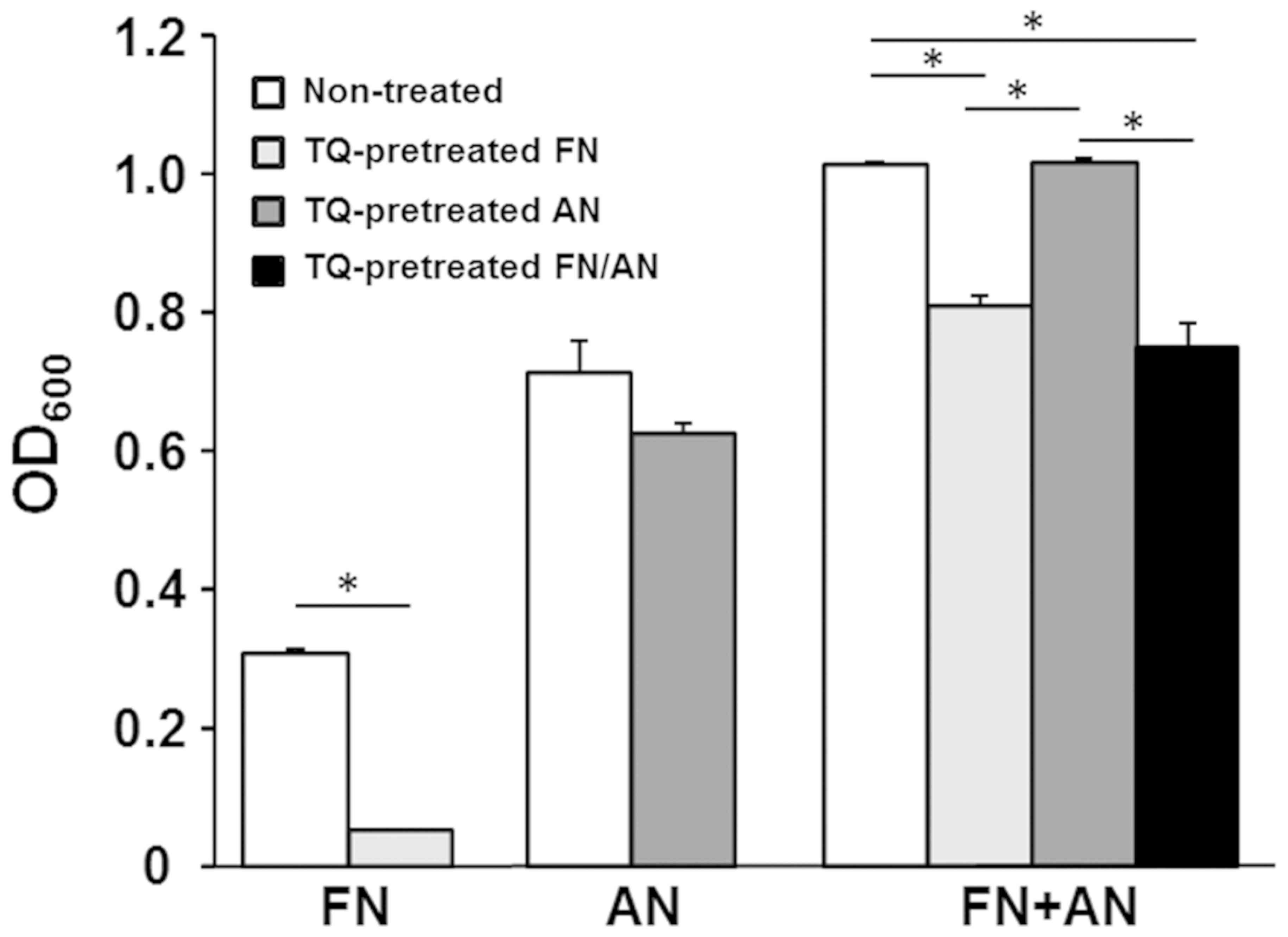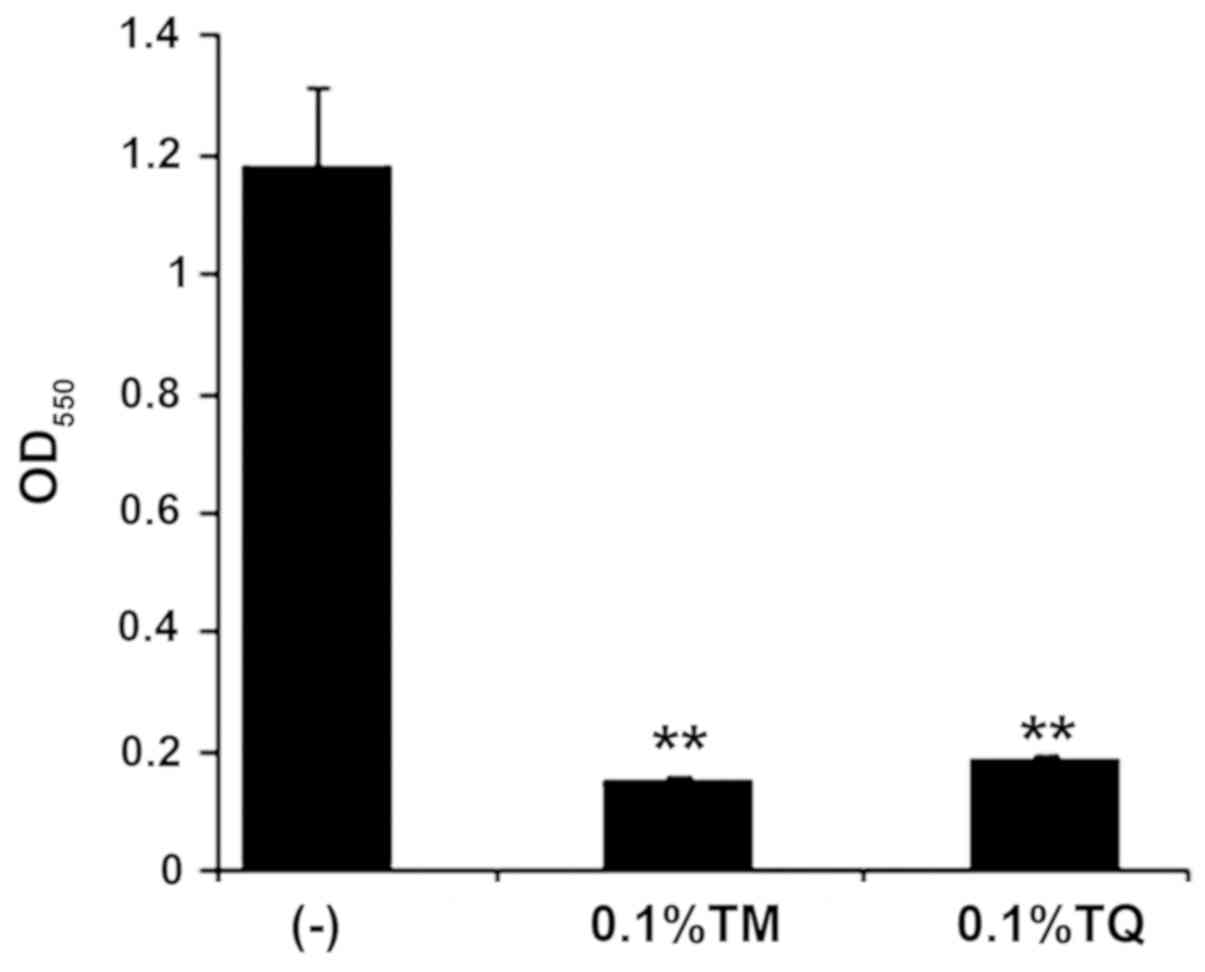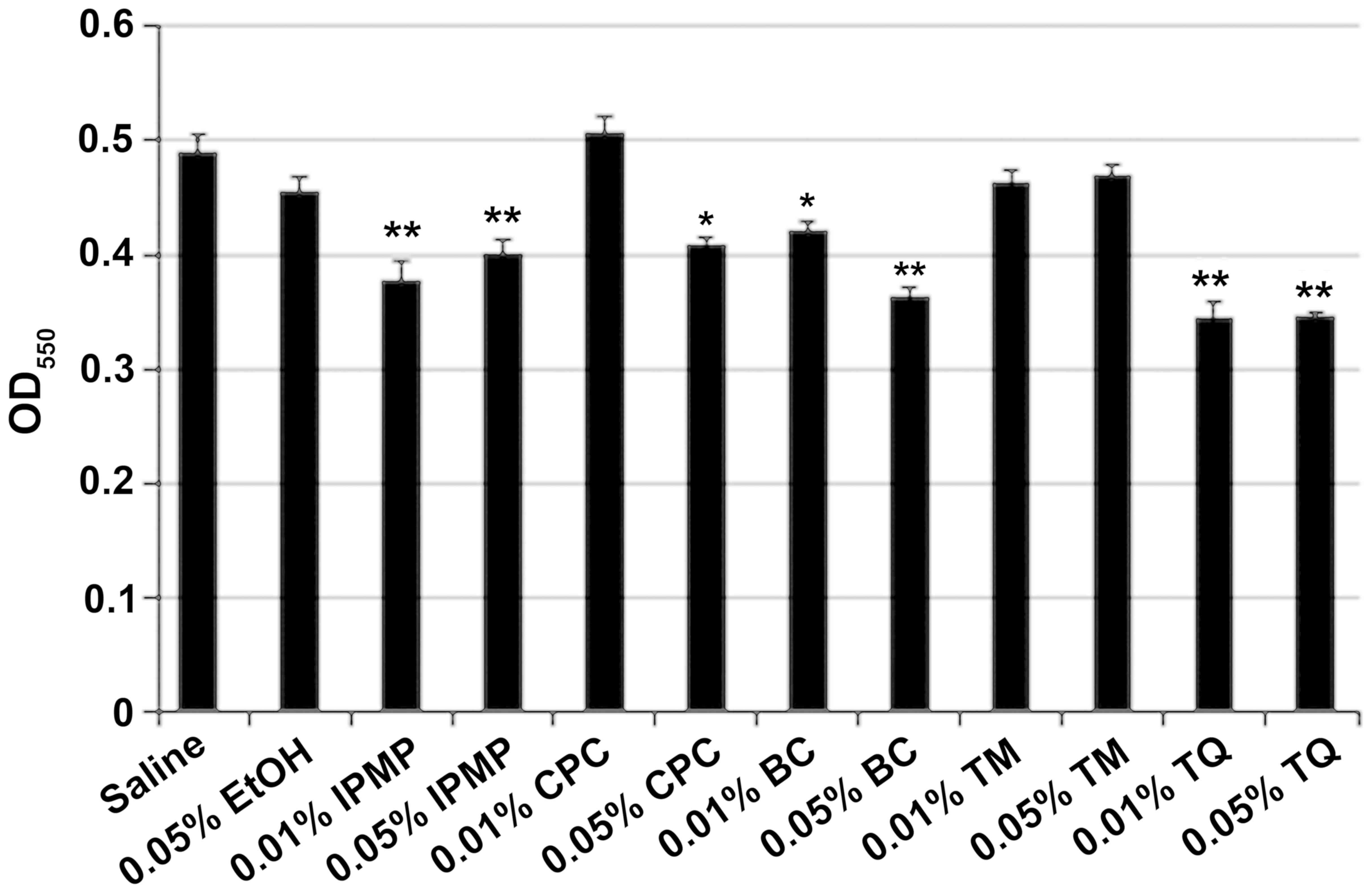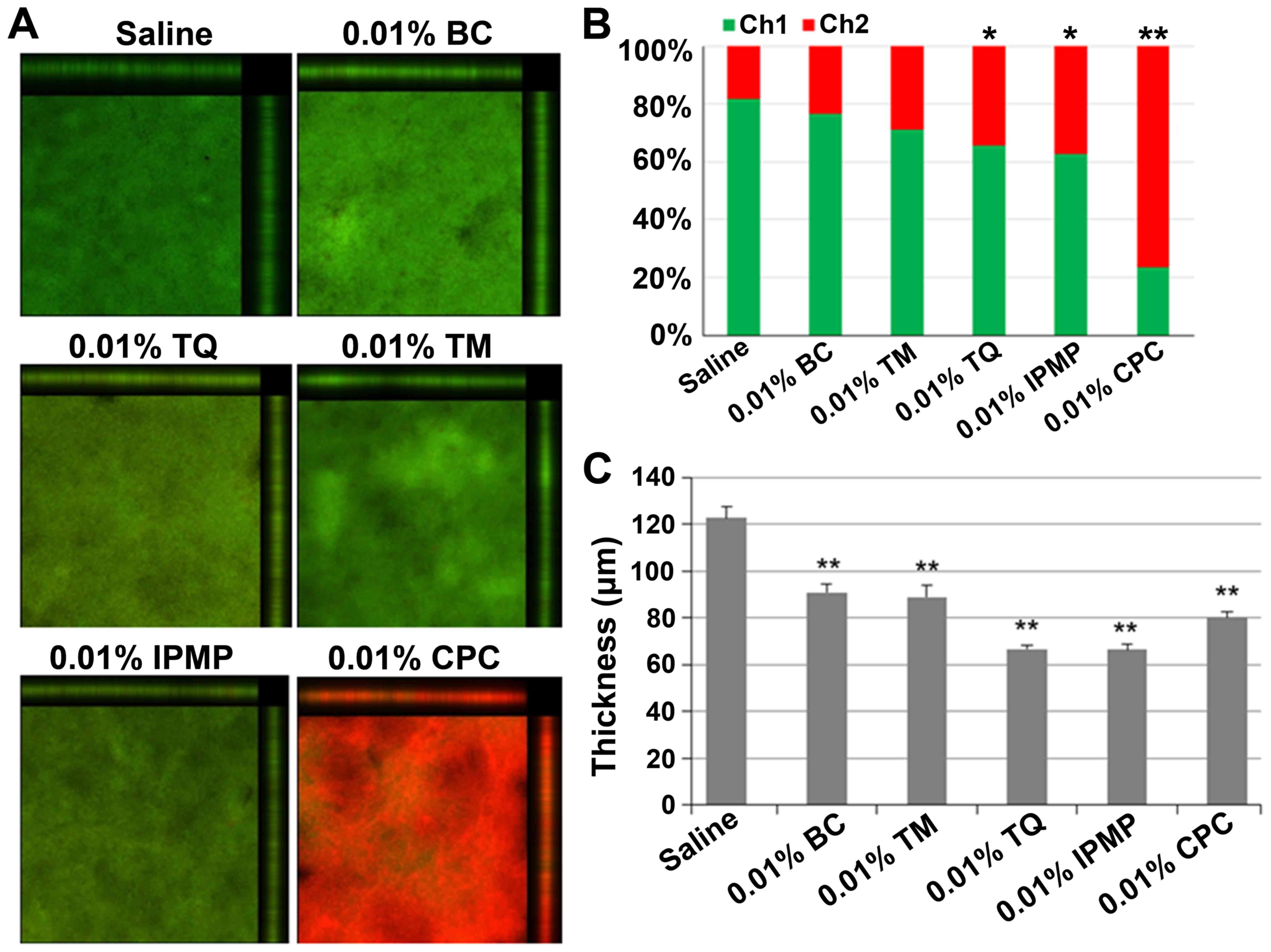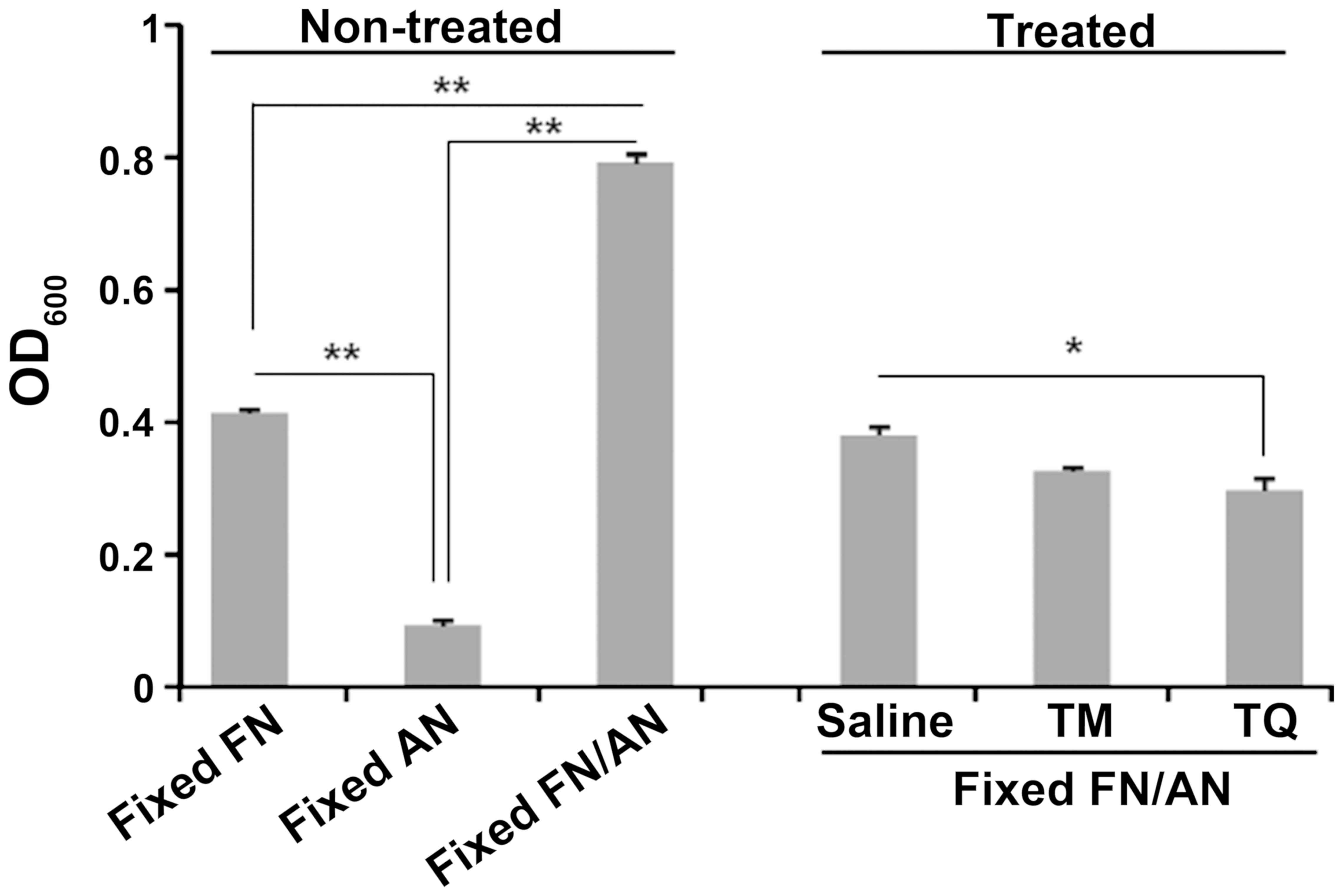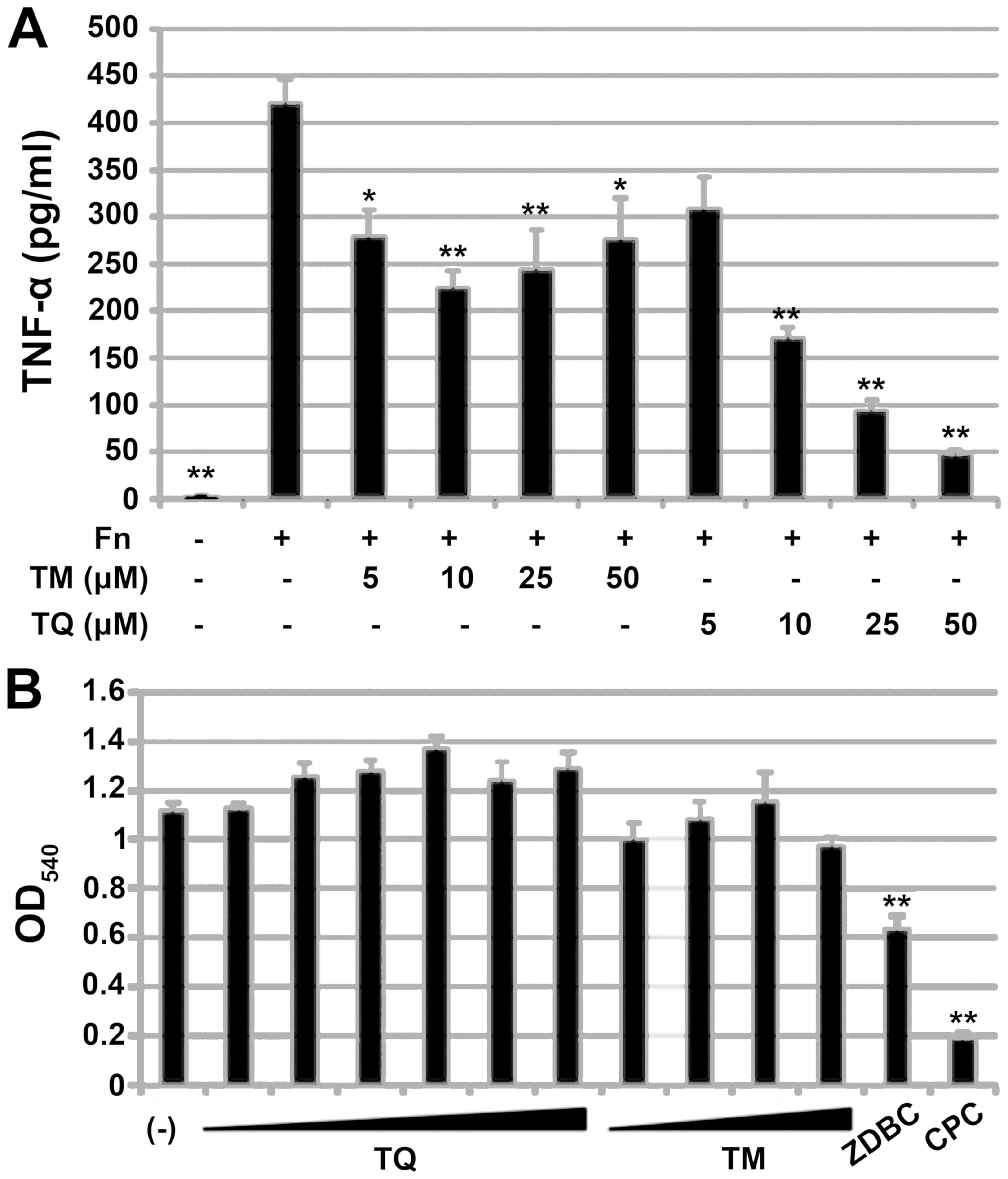|
1
|
Dewhirst FE, Chen T, Izard J, Paster BJ,
Tanner AC, Yu WH, Lakshmanan A and Wade WG: The human oral
microbiome. J Bacteriol. 192:5002–5017. 2010. View Article : Google Scholar : PubMed/NCBI
|
|
2
|
Kolenbrander PE and London J: Adhere
today, here tomorrow: Oral bacterial adherence. J Bacteriol.
175:3247–3252. 1993. View Article : Google Scholar : PubMed/NCBI
|
|
3
|
Rickard AH, Gilbert P, High NJ,
Kolenbrander PE and Handley PS: Bacterial coaggregation: An
integral process in the development of multi-species biofilms.
Trends Microbiol. 11:94–100. 2003. View Article : Google Scholar : PubMed/NCBI
|
|
4
|
Han YW: Fusobacterium nucleatum: A
commensal-turned pathogen. Curr Opin Microbiol. 23:141–147. 2015.
View Article : Google Scholar : PubMed/NCBI
|
|
5
|
Sun Y, Shu R, Li CL and Zhang MZ:
Gram-negative periodontal bacteria induce the activation of
Toll-like receptors 2 and 4, and cytokine production in human
periodontal ligament cells. J Periodontol. 81:1488–1496. 2010.
View Article : Google Scholar : PubMed/NCBI
|
|
6
|
To TT, Gümüş P, Nizam N, Buduneli N and
Darveau RP: Subgingival plaque in periodontal health antagonizes at
Toll-like receptor 4 and inhibits E-selectin expression on
endothelial cells. Infect Immun. 84:120–126. 2015. View Article : Google Scholar : PubMed/NCBI
|
|
7
|
Hong CY, Lin SK, Kok SH, Cheng SJ, Lee MS,
Wang TM, Chen CS, Lin LD and Wang JS: The role of
lipopolysaccharide in infectious bone resorption of periapical
lesion. J Oral Pathol Med. 33:162–169. 2004. View Article : Google Scholar : PubMed/NCBI
|
|
8
|
Suwabe K, Yoshida Y, Nagano K and
Yoshimura F: Identification of an L-methionine γ-lyase involved in
the production of hydrogen sulfide from L-cysteine in
Fusobacterium nucleatum subsp. nucleatum ATCC 25586.
Microbiology. 157:2992–3000. 2011. View Article : Google Scholar : PubMed/NCBI
|
|
9
|
Nakano M, Shin K, Wakabayashi H, Yamauchi
K, Abe F and Hironaka S: Inactivating effects of the
lactoperoxidase system on bacterial lyases involved in oral
malodour production. J Med Microbiol. 64:1244–1252. 2015.
View Article : Google Scholar : PubMed/NCBI
|
|
10
|
Rubinstein MR, Wang X, Liu W, Hao Y, Cai G
and Han YW: Fusobacterium nucleatum promotes colorectal
carcinogenesis by modulating E-cadherin/β-catenin signaling via its
FadA adhesin. Cell Host Microbe. 14:195–206. 2013. View Article : Google Scholar : PubMed/NCBI
|
|
11
|
Allen-Vercoe E, Strauss J and Chadee K:
Fusobacterium nucleatum: An emerging gut pathogen? Gut
Microbes. 2:294–298. 2011. View Article : Google Scholar : PubMed/NCBI
|
|
12
|
Seymour GJ, Ford PJ, Cullinan MP, Leishman
S and Yamazaki K: Relationship between periodontal infections and
systemic disease. Clin Microbiol Infect. 13 (Suppl 4):S3–S10. 2007.
View Article : Google Scholar
|
|
13
|
Imai H, Kita F, Ikesugi S, Abe M, Sogabe
S, Nishimura-Danjobara Y, Miura H and Oyama Y: Cetylpyridinium
chloride at sublethal levels increases the susceptibility of rat
thymic lymphocytes to oxidative stress. Chemosphere. 170:118–123.
2010. View Article : Google Scholar
|
|
14
|
Hidalgo E and Dominguez C: Mechanisms
underlying chlorhexidine-induced cytotoxicity. Toxicol In Vitro.
15:271–276. 2001. View Article : Google Scholar : PubMed/NCBI
|
|
15
|
Chandra Shekar BR, Nagarajappa R, Suma S
and Thakur R: Herbal extracts in oral health care-A review of the
current scenario and its future needs. Pharmacogn Rev. 9:87–92.
2015. View Article : Google Scholar : PubMed/NCBI
|
|
16
|
Darvishi Khezri H, Haidari Gorji MA, Morad
A and Gorji H: Comparison of the antibacterial effects of matrica
& Persica™ and chlorhexidine gluconate mouthwashes in
mechanically ventilated ICU patients: A double blind randomized
clinical trial. Rev Chilena Infectol. 30:361–373. 2013.(In
Spanish). View Article : Google Scholar : PubMed/NCBI
|
|
17
|
Pedrazzi V, Leite MF, Tavares RC, Sato S,
do Nascimento GC and Issa JP: Herbal mouthwash containing extracts
of Baccharis dracunculifolia as agent for the control of
biofilm: Clinical evaluation in humans. ScientificWorldJournal.
2015:7126832015. View Article : Google Scholar : PubMed/NCBI
|
|
18
|
Filoche SK, Soma K and Sissons CH:
Antimicrobial effects of essential oils in combination with
chlorhexidine digluconate. Oral Microbiol Immunol. 20:221–225.
2005. View Article : Google Scholar : PubMed/NCBI
|
|
19
|
Ali BH and Blunden G: Pharmacological and
toxicological properties of Nigella sativa. Phytother Res.
17:299–305. 2003. View
Article : Google Scholar : PubMed/NCBI
|
|
20
|
Gholamnezhad Z, Havakhah S and Boskabady
MH: Preclinical and clinical effects of Nigella sativa and
its constituent, thymoquinone: A review. J Ethnopharmacol.
190:372–386. 2016. View Article : Google Scholar : PubMed/NCBI
|
|
21
|
Kokoska L, Havlik J, Valterova I, Sovova
H, Sajfrtova M and Jankovska I: Comparison of chemical composition
and antibacterial activity of Nigella sativa seed essential
oils obtained by different extraction methods. J Food Prot.
71:2475–2480. 2008. View Article : Google Scholar : PubMed/NCBI
|
|
22
|
Ozdemir H, Kara MI, Erciyas K, Ozer H and
Ay S: Preventive effects of thymoquinone in a rat periodontitis
model: A morphometric and histopathological study. J Periodontal
Res. 47:74–80. 2012. View Article : Google Scholar : PubMed/NCBI
|
|
23
|
Nakasugi T, Murakawa T, Shibuya K and
Morimoto M: Deodorizing substance in black cumin (Nigella
sativa L.) seed oil. J Ole Sci. 66:877–882. 2017. View Article : Google Scholar
|
|
24
|
Saygun I, Nizam N, Keskiner I, Bal V,
Kubar A, Acikel C, Serdar M and Slots J: Salivary infectious agents
and periodontal disease status. J Periodontal Res. 46:235–239.
2011. View Article : Google Scholar : PubMed/NCBI
|
|
25
|
Zhou X, Liu X, Li J, Aprecio RM, Zhang W
and Li Y: Real-time PCR quantification of six periodontal pathogens
in saliva samples from healthy young adults. Clin Oral Investig.
19:937–946. 2015. View Article : Google Scholar : PubMed/NCBI
|
|
26
|
Chaieb K, Kouidhi B, Jrah H, Mahdouani K
and Bakhrouf A: Antibacterial activity of thymoquinone, an active
principle of Nigella sativa and its potency to prevent
bacterial biofilm formation. BMC Complement Altern Med. 11:292011.
View Article : Google Scholar : PubMed/NCBI
|
|
27
|
Kouidhi B, Zmantar T, Jrah H, Souiden Y,
Chaieb K, Mahdouani K and Bakhrouf A: Antibacterial and
resistance-modifying activities of thymoquinone against oral
pathogens. Ann Clin Microbiol Antimicrob. 10:292011. View Article : Google Scholar : PubMed/NCBI
|
|
28
|
Mansour M and Tornhamre S: Inhibition of
5-lipoxygenase and leukotriene C4 synthase in human blood cells by
thymoquinone. J Enzyme Inhib Med Chem. 19:431–436. 2004. View Article : Google Scholar : PubMed/NCBI
|
|
29
|
Woo CC, Kumar AP, Sethi G and Tan KH:
Thymoquinone: Potential cure for inflammatory disorders and cancer.
Biochem Pharmacol. 83:443–451. 2012. View Article : Google Scholar : PubMed/NCBI
|
|
30
|
Shokri H: A review on the inhibitory
potential of Nigella sativa against pathogenic and toxigenic
fungi. Avicenna J Phytomed. 6:21–33. 2016.PubMed/NCBI
|
|
31
|
El-Mahmoudy A, Matsuyama H, Borgan MA,
Shimizu Y, El-Sayed MG, Minamoto N and Takewaki T: Thymoquinone
suppresses expression of inducible nitric oxide synthase in rat
macrophages. Int Immunopharmacol. 2:1603–1611. 2002. View Article : Google Scholar : PubMed/NCBI
|
|
32
|
Sethi G, Ahn KS and Aggarwal BB: Targeting
nuclear factor-kappa B activation pathway by thymoquinone: Role in
suppression of antiapoptotic gene products and enhancement of
apoptosis. Mol Cancer Res. 6:1059–1070. 2008. View Article : Google Scholar : PubMed/NCBI
|
|
33
|
Mohamed A, Shoker A, Bendjelloul F, Mare
A, Alzrigh M, Benghuzzi H and Desin T: Improvement of experimental
allergic encephalomyelitis (EAE) by thymoquinone; an oxidative
stress inhibitor. Biomed Sci Instrum. 39:440–445. 2003.PubMed/NCBI
|
|
34
|
Sayed-Ahmed MM and Nagi MN: Thymoquinone
supplementation prevents the development of gentamicin-induced
acute renal toxicity in rats. Clin Exp Pharmacol Physiol.
34:399–405. 2007. View Article : Google Scholar : PubMed/NCBI
|
|
35
|
Badary OA, Al-Shabanah OA, Nagi MN,
Al-Bekairi AM and Elmazar MMA: Acute and subchronic toxicity of
thymoquinone in mice. Drug Develop Res. 44:56–61. 1998. View Article : Google Scholar
|
|
36
|
Steinmann A, Scatze M, Agathos M and Brett
R: Allergic contact dermatitis from black cumin (Nigella
sativa) oil after topical use. Contact Dermatitis. 36:268–269.
1997. View Article : Google Scholar : PubMed/NCBI
|
|
37
|
Zedlitz S, Kaufmann R and Bochncke WH:
Allergic contact dermatitis from black cumin (Nigella
sativa) oil-containing ointment. Contact Dermatitis.
46:1882002. View Article : Google Scholar : PubMed/NCBI
|
|
38
|
Kapil H, Suresh DK, Bathia SC and Arora
KS: Assessment of clinical efficacy of locally delivered 0.2%
thymoquinone gel in the treatment of periodontitis. Saudi Dent J.
30:348–354. 2018. View Article : Google Scholar : PubMed/NCBI
|















